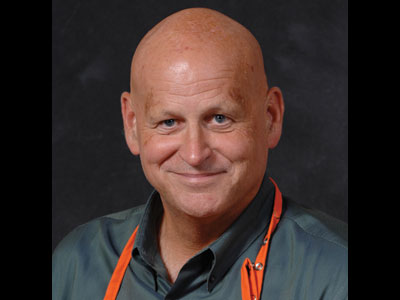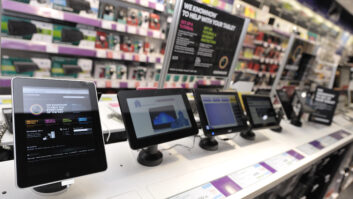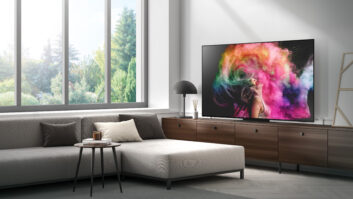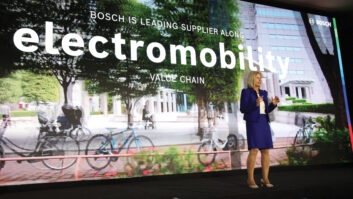
Legendary appliance merchant Bob Baird is widely lauded for building Home Depot’s majap business into a dominant force in the white-goods industry, and influencing the course of product design, functionality and pricing through his merchandising choices.
In his spare time he also honchoed kitchen remodeling for the home improvement chain, launching the popular Stonemark Granite Collection in 2008 and the Martha Stewart cabinet line in 2010, and before that held senior positions at past retail greats Montgomery Ward and The Good Guys.
TWICE caught up with Baird as he handed off Home Depot’s appliance reins to share in his 50-year view of the business.
TWICE: What was the most significant development in home appliances during your career?
I sold a bunch of white boxes over most of my career, and it was not particularly exciting.
A huge change came around 2000, when stainless steel and color came in. Then the business became very exciting, almost a fashion category. Some people referred to it as “jewelry in the kitchen.”
TWICE: What fomented the change?
LG and Samsung had a lot to do with that. They became very innovative, and their front-load washers and French-door fridges just stood out on our floors. They had great fit, feel and finish.
TWICE: And today they’re a force to be reckoned with.
They saw an opportunity for premium products in the U.S. market. At the time, Sears’ and Kenmore’s market share was falling — it’s down from over 40 percent to under 24 — and in 2003 Maytag began outsourcing its front-load laundry to Samsung, which got them up and running.
LG got a big start at Best Buy, and then Home Depot added them after Whirlpool said no to us, although we would have added them anyway. That’s when they really took off.
Together they went from no business here in 2005 to a 28.2 percent share over 10 years.
See also: A Life In Retail: Bob Baird’s 50-Year Journey
TWICE: Which U.S. manufacturer is best positioned to compete with LG and Samsung?
Probably Whirlpool. They’re global, they’ve made huge improvements, and their products look better, with improved fit and finish.
GE too, now that they’re backed by Haier. Haier is a huge company with a lot of resources. You can’t just be a U.S. player any more.
TWICE: What do you think the industry will look like in 10 years?
You already have a handful of big global companies: Whirlpool, LG, Samsung, GE-Haier and Electrolux. Electrolux was a little wounded from their attempted GE acquisition, but they’ll be O.K.
So you’ll have these big global players, and then some smaller niche manufacturers.
TWICE: Any newcomers on the horizon?
You have two big companies in Turkey — Arcelik and Vestel — and Midea in China could be one of the big, global players. They [Midea] make a lot of product for a lot of people now, including GE, and they have U.S. aspirations, which they could realize through an acquisition or alliance.
TWICE:What about retail? What has been the biggest change there over the span of your career?
The biggest change is that the customer is in charge. When I sold Maytag 30 or 40 years ago the customer knew very little. Now, they go online for 30 minutes and narrow their selection to five pieces, and when they come in they only want warranty, pricing and delivery details. They don’t want to be sold.
Back when retailers only carried one brand the manufacturer ran things. Then, around 1985, when Circuit City, Ward’s and Sears began carrying all the big brands, the power shifted to the big boxes. Today, the Internet has put the customer in charge, and those who don’t understand that are doomed.
TWICE: So is the appliance business moving online?
No. Amazon has a huge amount of appliance merchandise but their market share is under 1 percent; they have no impact in the category.
TWICE: Why is that?
Most customers want to see and touch the products, and delivery is very important to them. It’s also tough for Amazon to discount below Lowe’s and Home Depot’s prices. So if you remove pricing from the equation, there really is no incentive to shop for appliances there.
TWICE: So what is the retailer’s role then?
Their most important role is to have showrooms so customers can see the products.
TWICE: And will showrooms still be around in 10 or 20 years?
Yes, they will be around, although retail will look very different. It may look something like Home Depot — 2,000 showrooms and no inventory. The orders go through a network of 250 home delivery hubs operated by independent contractors.
TWICE: Is there still a place for the independent dealer?
There’s a place for a good, strong independent with a high level of service who carries a good selection of product. Independents make up 30 percent of the business and as Sears fades their share will go up, and LG’s and Samsung’s growth goals are to do more business with the smaller guys.
But all retailers need to ask themselves “Why do I exist? Where will I be in five years?”
Retail is a kind of momentum game; it takes years to turn things around, and I can’t think of any large retailers who’ve done so successfully. Never happened.
You can’t postpone change; you’ve got to aggressively seek it. Five of the six companies I worked for are gone. Hopefully it wasn’t my fault! No, it’s because they didn’t have a vision, weren’t smart enough or were too arrogant, and they didn’t change.













